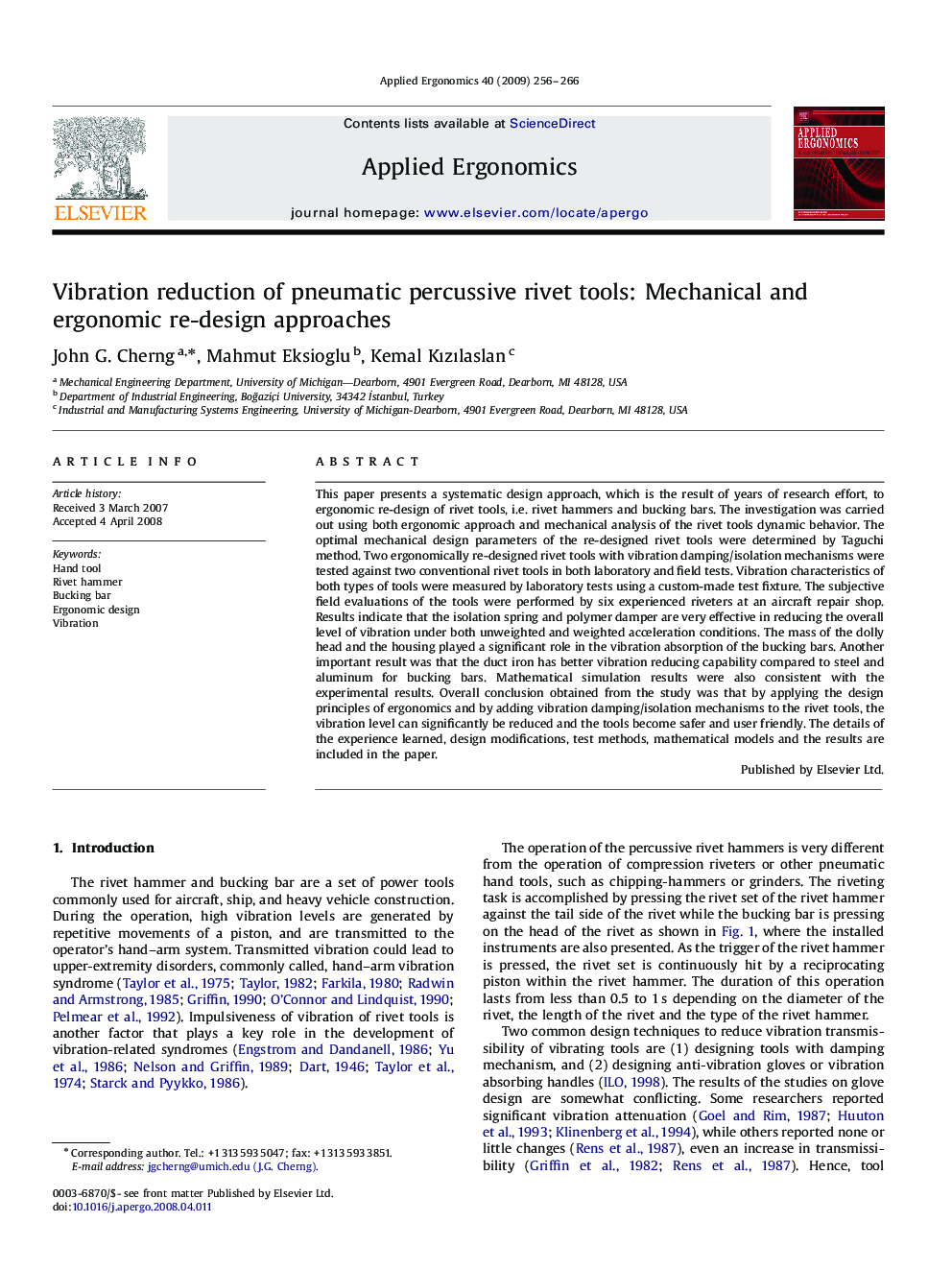| کد مقاله | کد نشریه | سال انتشار | مقاله انگلیسی | نسخه تمام متن |
|---|---|---|---|---|
| 548892 | 872291 | 2009 | 11 صفحه PDF | دانلود رایگان |

This paper presents a systematic design approach, which is the result of years of research effort, to ergonomic re-design of rivet tools, i.e. rivet hammers and bucking bars. The investigation was carried out using both ergonomic approach and mechanical analysis of the rivet tools dynamic behavior. The optimal mechanical design parameters of the re-designed rivet tools were determined by Taguchi method. Two ergonomically re-designed rivet tools with vibration damping/isolation mechanisms were tested against two conventional rivet tools in both laboratory and field tests. Vibration characteristics of both types of tools were measured by laboratory tests using a custom-made test fixture. The subjective field evaluations of the tools were performed by six experienced riveters at an aircraft repair shop. Results indicate that the isolation spring and polymer damper are very effective in reducing the overall level of vibration under both unweighted and weighted acceleration conditions. The mass of the dolly head and the housing played a significant role in the vibration absorption of the bucking bars. Another important result was that the duct iron has better vibration reducing capability compared to steel and aluminum for bucking bars. Mathematical simulation results were also consistent with the experimental results. Overall conclusion obtained from the study was that by applying the design principles of ergonomics and by adding vibration damping/isolation mechanisms to the rivet tools, the vibration level can significantly be reduced and the tools become safer and user friendly. The details of the experience learned, design modifications, test methods, mathematical models and the results are included in the paper.
Journal: Applied Ergonomics - Volume 40, Issue 2, March 2009, Pages 256–266